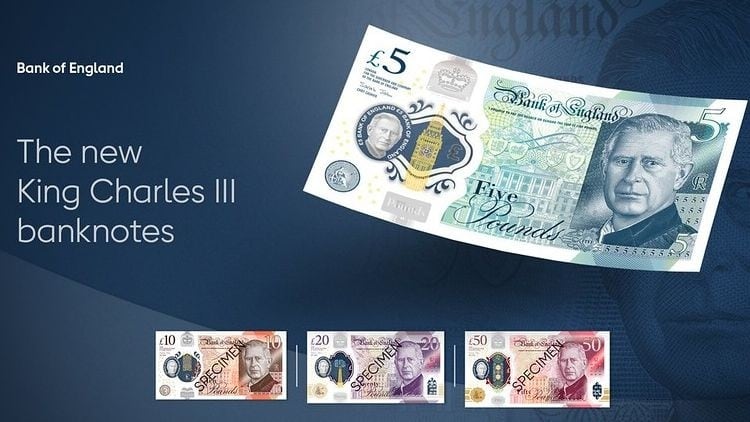According to the Bank Of England website, “counterfeiting directly funds organised crime” and subsequently also “harms the UK economy”. Banknotes displaying King Charles III include £5, £10, £20 and £50.
Notes featuring King Charles were released last summer and at the time, the Bank of England said these and Queen Elizabeth II would be in circulation simultaneously. New notes were only printed to replace those needed and to meet any specific increase in demand.
It advised: “Upon suspect of a counterfeit bank note, you should visit the police who will then fill out an NCO-1 form and provide you with a receipt and incident number. Suspect notes will be sent to the National Crime Agency. If notes are counterfeit, notes will be sent to the Bank of England for further examination.” A variety of resources are available on the Bank of England website.
Key features to look out for when checking security features include:
Coloured foil patch
On the back of the notes, the metallic foil patch can be found. The patch is copper on the £10 note, green on the £5 note, purple on the £20 note and red on the £50 note.
The monarch’s portrait in the see-through window
Portraits of either her late Majesty or King Charles III can be found printed with the denomination on the window. “Bank of England” is also printed twice around the edge.
Silver foil patch
A silver foil patch can be found at the front of the notes above the see-through window.
Feel of polymer and raised print
Notes are labelled “Bank of England” and are also printed on a plastic material known as polymer.
Print quality
The value of a note is written in smaller print below the monarch’s portrait. The quality of the note is always clear and should be in high colour resolution.
Ultraviolet numbers
The value of a note should show under an ultraviolet light and should be shown in bright red and green.
Notes can also be checked through other security features :
A see through window
When placing the note over a window, look for a second smaller window towards the bottom corner of £50 and £20 notes. Ensure the foil is silver on the back of all notes. Gold on the front of the £5 and £10 blue on the front of £20 and gold and green on the front of £50.
Notes should typically be 125mm x 65mm for £5 notes, 132x 69mm for £10, 139x 73mm, £20 146mm x 77mm for £50.
The Bank of England is unable to reimburse for counterfeit notes. If after investigation, notes are found as non fraudulent or there is a lack of compelling evidence to support counterfeit claims, returning notes is required through various form options.
The Bank of England urged anyone who has any information regarding persons suspected of using, selling or making counterfeit bank notes to phone Crimestoppers on 0800 555 111 anonymously or contact the police.
The Bank of England also offered online banknote training and guidance which is easily accessible and takes 30 minutes to complete and recommended checking your notes at point of sale.

